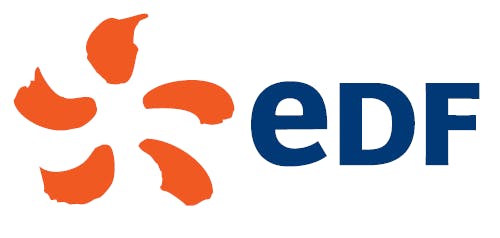Hydropower generation
| Reassessment of generation | The reservoirs are located upstream from basins experiencing water stress, meaning they are regularly required to provide back-up in case of lower water levels. Every 5 years, EDF Hydro reassesses its sites’ generation, taking account of changing hydrology and temperatures due to climate change. |
|---|
Investment criteria
| Criteria |
Changes in water stress is one of the criteria used to evaluate any new project presented to the investment Committee (CECEG, i.e. Executive Committee’s Commitments Committee). |
|---|
Water withdrawn
| Variation in water withdrawals | Group water withdrawals are up 3% compared to 2020, but remain 5% below the average of the last five years. |
|---|---|
| Cooling water | 69% of the water withdrawn for cooling purposes by the Group comes from marine or estuary environments, where resource availability is not an issue. This percentage is almost 63% in France, over 99% in the United Kingdom and close to 85% in Italy. |
| Subterranean water | The quantity of freshwater sourced from groundwater is marginal and amounts to 2hm3, about 0.01% of the freshwater taken from the surface. Mains water is not used for cooling systems but only for various forms of water process for a share lower than 0.1%. |
Returning water to the natural environment
| 99% of withdrawn water is returned | At the Group level, around 43 billion cubic metres of water are used for cooling thermal power facilities, of which 99% is reusable and returned virtually instantaneously to the natural environment. As such, EDF is a significant user, but negligible consumer, of water. |
|---|
Group key performance indicator
Water intensity is the specific consumption of evaporated water per kilowatt hour of electricity generated.
The stated aim is to remain below the target of 0.95l/kWh on average over the five past years, by progressively reducing specific water consumption by 2030 (the benchmark being the 2015 level at 0.96l/kWh).
This threshold would serve to put an exceptional climatic year into perspective. Taking account of the expected variation in generation resources and actions taken to optimise water, total Group-wide freshwater withdrawal and consumption should fall in the coming years.
Water intensity over 2021 alone is down compared to 2020 (0.82l/kWh). In fact, the volume of evaporated water (1) in absolute value (427hm3) is down by 2% despite the increase in thermal production and related water withdrawals. Most of this volume is in France (96%).
Water intensity (l/kWh) √

This graph shows us the Water intensity (in l/kWh) √
2019 : 0.87
2020 : 0.87
2021 : 0.86
Target : < 0.95*
* On average over the past five years
√ 2021 indicator subject to reasonable assurance check by Deloitte & Associés.
(1) Of which 99.5% fresh water.
